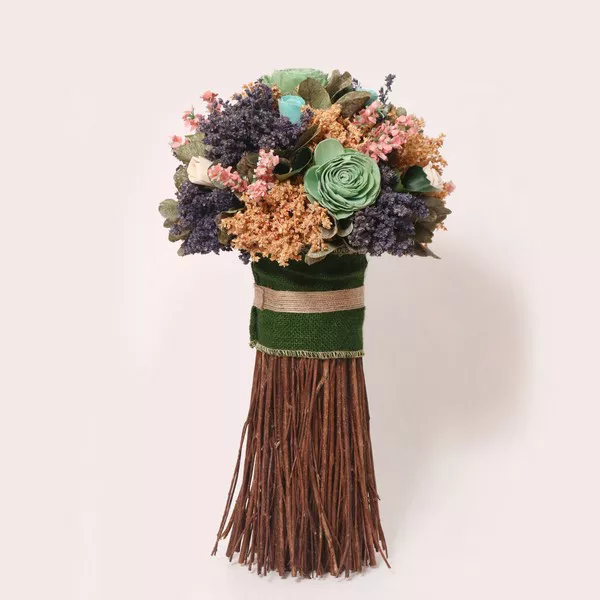Dried flowers have long been cherished for their timeless beauty and ability to preserve special memories. Whether adorning a wedding bouquet, gracing a dining table centerpiece, or enhancing interior décor, dried flowers add a touch of elegance to any space. However, despite their aesthetic appeal, dried flowers are not immune to environmental factors such as mold. Mold growth on dried flowers not only detracts from their visual appeal but can also pose health risks to individuals with allergies or sensitivities. In this article, we delve into the factors that contribute to mold growth on dried flowers, explore preventative measures, and discuss effective treatment options.
Understanding Mold Growth on Dried Flowers
Mold is a type of fungus that thrives in moist and humid environments. While the drying process removes much of the moisture from flowers, residual moisture content can still remain, providing a breeding ground for mold spores. Several factors contribute to mold growth on dried flowers:
1. Moisture Content: Even after the drying process, flowers may retain some moisture, especially in humid climates or if not properly dried. This residual moisture creates conditions conducive to mold growth.
2. Environmental Conditions: Humidity levels play a crucial role in mold development. High humidity environments provide ample moisture for mold spores to germinate and proliferate. Additionally, poor ventilation can exacerbate humidity levels, further promoting mold growth.
3. Contamination: Mold spores are ubiquitous in the environment and can settle on dried flowers during storage or display. If these spores encounter suitable conditions, such as moisture and organic matter, they can quickly colonize and form visible mold colonies.
4. Organic Material: Dried flowers contain organic matter, providing nutrients for mold growth. Pollen, dust, and other organic debris can accumulate on the flower’s surface, serving as a substrate for mold colonization.
Preventative Measures
Preventing mold growth on dried flowers requires proactive measures to minimize moisture exposure and create an inhospitable environment for mold spores. Consider the following tips to preserve the beauty of your dried flower arrangements:
1. Thorough Drying: Ensure flowers are adequately dried before use or display. Hang flowers upside down in a well-ventilated area with low humidity to facilitate drying. Avoid drying flowers in areas prone to moisture, such as bathrooms or kitchens.
2. Humidity Control: Maintain indoor humidity levels below 50% to inhibit mold growth. Use dehumidifiers or air conditioners in humid environments, especially during warm summer months. Adequate ventilation is also essential to promote air circulation and prevent moisture buildup.
3. Proper Storage: Store dried flowers in a cool, dry place away from direct sunlight. Use airtight containers or sealable bags to protect flowers from moisture and dust. Silica gel packets can help absorb excess moisture and preserve the integrity of dried flowers during storage.
4. Regular Inspection: Periodically inspect dried flower arrangements for signs of mold growth. Discard any flowers showing visible mold or signs of deterioration to prevent mold from spreading to neighboring blooms.
5. Sanitation: Keep display areas clean and free of dust and debris, which can harbor mold spores. Wipe down surfaces regularly with a damp cloth to remove accumulated dust and maintain optimal air quality.
Treatment Options
If mold develops on dried flowers despite preventative measures, prompt intervention is necessary to mitigate further damage. Depending on the severity of the mold infestation, various treatment options are available:
1. Brushing: For minor mold growth, gently brush affected areas with a soft-bristled brush to remove visible mold spores. Take care not to damage delicate flower petals during the process.
2. Isolation: Quarantine mold-infested flowers to prevent spores from spreading to other arrangements. Place affected flowers in a sealed bag or container and dispose of them promptly to avoid contaminating surrounding surfaces.
3. Dehumidification: Increase ventilation and reduce indoor humidity levels to discourage mold growth. Use dehumidifiers or air purifiers equipped with HEPA filters to remove excess moisture and airborne mold spores from the environment.
4. Chemical Treatments: Commercial fungicides or mold inhibitors can be applied to dried flowers to eradicate mold colonies and prevent recurrence. Follow manufacturer instructions carefully and test any chemical treatments on a small, inconspicuous area before widespread application.
5. Rehydration: In some cases, lightly misting dried flowers with distilled water can help revive wilted blooms and discourage mold growth. However, exercise caution to avoid oversaturating flowers, as excessive moisture can exacerbate mold problems.
Conclusion
While dried flowers offer lasting beauty and sentimental value, they are susceptible to mold growth if not properly cared for. Understanding the factors that contribute to mold development and implementing preventative measures are essential for preserving the integrity of dried flower arrangements. By maintaining optimal humidity levels, practicing proper storage techniques, and promptly addressing mold infestations, individuals can enjoy the timeless elegance of dried flowers for years to come. Remember, diligence and attention to detail are key to safeguarding cherished floral mementos from the insidious effects of mold.


